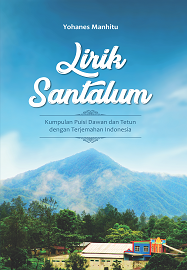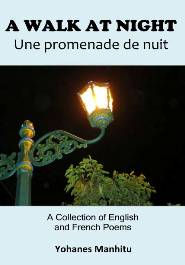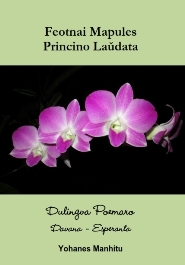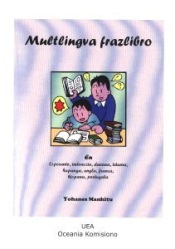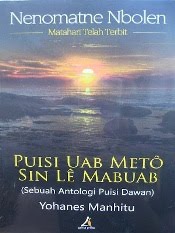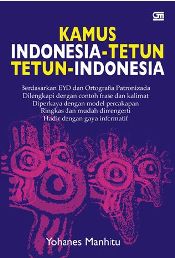By YOHANES MANHITU
When they remain silent, they cry out.
Their silence is price enough.
LIFAU is well-known by all East Timorese, because it’s said to
be the most historical site of that part of the island. It’s the place where the
first Portuguese traders arrived in 1515. It is also said that they called at the
area for sandalwood trade when they were on a trip to the Mollucas. It is because
of the fragrant tree that they decided to occupy the island. At the site, you will
see a monument standing by the beach and beside it is an old canal that is never
touched by water. The locals keep a legend about the canal until today. The names
of people in the story are, of course, fictive, and only God that knows the truth
of it.
One day, in the time of Portuguese colonialism, a group of Portuguese
catholic priests arrive at the port from Portugal by a very nice looking sailing
boat decorated with crosses. Feeling that their boat would be unsafe if it remains
in the water, the Portuguese government at the port forced the locals to dig a canal
through which a ship will have to sail from the shore to the foot of the rock on
which stands a luxurious European style building – the governor’s office of Lifau,
Oecusse. The canal that the local are digging is wide enough for a sailing boat
marked with crosses to pass through. It is the rest of the crusaders who are coming
to Asia.
Since the arrival of the boat, the people of Ambeno had to undergo
a hard forced labour. Every day, from the morning until the late afternoon, the
people work on the canal, digging and digging. The forced labourers, who used to
live peacefully by cultivating their dry lands and keeping their flocks, have to
spend almost most of their time digging a canal that they themselves are never sure
for its finishing. It was a mission impossible they think. How can they make it
possible that seawater flow through the canal? People like Maunu, Poto, Upu, Lafu,
and the others must be present at the Porto Principal de Timor to continue their
hard work, without any rights to complaint.
Now those people realise that they have white masters, who do
not have anything in common with them. None of them is like Usif Sonbay, Usif Atoin
Meto, who has been known in the western part of the island and was almost defeated
by the Dutch. The new masters and their disciples bring with them new things – technology
and ideology – that they introduce to the locals. The digging of the seawater canal
was the strangest technology they have ever known in their lives.
Day by day, week by week, the mission goes on until the labourers
are certain that what they were doing is absolutely impossible: sea water will
never flow through the canal and certainly no sailing boat will sail to the port
at the foot of the hill.
One day, after working for a half day, the labourers whisper
among them secretly to discuss something very important. After their hard day, they
meet at Juniuk’s house at night. Juniuk is a tall tough half-aged man with little
moustache and sharp eyes. He has been called and punished by the whites several
times because of defending the other labourers. He might have been blacklisted.
“My brothers, it is now clear that we have been wasting time
and almost most of our lives for this impossible hard work”, said Juniuk, “we have
to get rid of it immediately. I hope you all would agree with me to take strong
action against the whites”.
“Yes, my dear brother. It is time to put an end to this burden.
I definitively agree with our brother Juniuk. What he has just said is absolutely
true. What about the others?”, said Am Poto.
The other participants at the secret meeting, like Sufa and
Poto, who are from Tulaika, and Seko, who is from Mahata, near the border with Timor-Dutch,
think for some minutes and they say, “We all agree with both of you and ready to
take any action at any time”.
Fortunately, all of the forced labourers agree to put an end
to the work. In the beginning, some were too afraid to get involved because they
had foreseen what kind of punishment they would face. What will happen to their
families, if they are punished? But because they were too afraid of being called
betrayers, they finally agree with their friends.
That night, Juniuk and his companions did not manage to decide
how they will act because they are too tired and have to go to bed. Besides, they
are working again the next morning. So, they promise to meet again the next evening
at the same place with better security. The enemies must never know the crucial
meeting.
When the sun has set beautifully, leaving a golden light in
the west of the port, and the cocks and wild birds have found a place to pass the
night, the poor Timorese labourers walk in the dark towards Juniuk’s house. That
night they successfully decide something that will always be remembered by many
people as a legend, at least by the later generations of this part of the island.
They have agreed to cut off the head of the priest whose boat will never sail through
the canal.
“Because of the boat of the white priests we have to leave our
families, rice fields, and have almost sacrificed our lives here. He has to pay
all this pain”, said Juniuk.
The participants, as usual, do not change their minds, because,
in their opinions, it is worth doing. It is the precious moment to defend themselves
or more preciously to free themselves from the chains of colonialism.
That afternoon, when a white priest come alone to see the canal,
the furious people kidnap him and take him the bush, away from his white comrades.
There, they take his life away by separating his head from his body. It is really
a tragic moment. The beach, the rocky hills, and the tamarind trees are the speechless
eyewitnesses of this murder.
As many people believe that every padre is holy and is a man
of God, those men want to prove whether or not it is true. Seko takes a piece
of black cloth that he has prepared and wraps a brown rock hold by Juniuk. Am Kelu,
the oldest of them, says some magic words in a deep voice: “If it is true that you
are a holy person, a man of God, let the stone that we wrap resemble to your face
and head”. No-one will believe that soon their prayer is answered. There comes
a miracle from heaven, the black rock turns to the face and head of the priest.
The head-like rock is then put under a tamarind tree. Around
it there are stones forming a cemetery. Nobody knows who started visiting and lighting
candles at that place. Years later, the priest’s (?) bones are found and then put
in a glass box, just next to the ruins of the governor’s office.
After the murder of the Portuguese priest, the digging of the
canal seems to be completely stopped. I never hear the story about what happened
to the murderers’ lives after that murder. Did the Portuguese sentence them to
death?
Despite the incident, the Portuguese continued their occupation
in the region until they were forced to leave the port and the enclave and moved
to Dili. But, there is something important to bear in mind is that they always claim
the region part of their land. It might be the reason why during the Indonesian
era, Oecusse (Ambeno) was a district of East Timor and now after its independence,
it remains part of East Timor, despite its geographical status as part of West
Timor.
Yogyakarta, 10th June 2002
---------------------------------------------
For your information. This writing was originally available at http://www.geocities.ws/johnmanhitu2001/THE_ABANDONED_CANAL.html, but later, it was published in PDF by Past Masters International at http://www.pastmasters.net/uploads/2/6/7/5/26751978/the_abandoned_canal_-_lifau_oecussi.pdf.



















